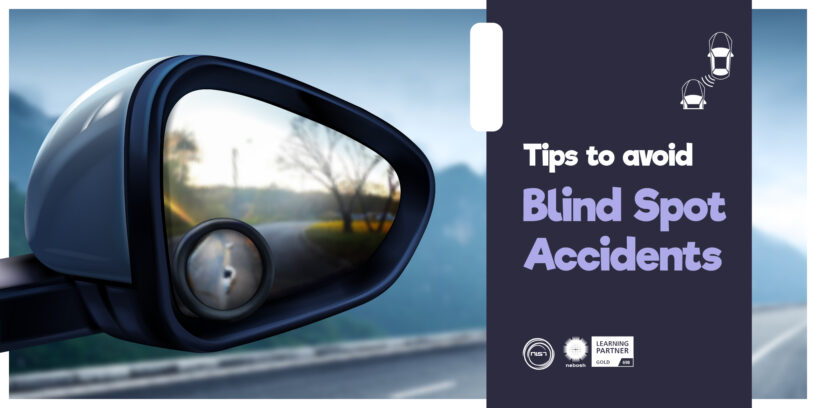While blind spots are unquestionably harmful, there are numerous strategies to avoid them, even if they cannot be eliminated. The following are some precautions to take to avoid blind spots and accidents caused by this phenomenon:
#1 Check Your Mirrors
Correct mirror adjustment is the first line of defence against blind spots. Vehicles normally have three mirrors: a rear-view mirror in the cabin, a right outside rear-view mirror, and a left outside rear-view mirror. All three must be adjusted to provide you with the best peripheral vision from your driving posture. Creating overlaps in their sight field is a common mistake while setting the mirrors. The three mirrors should be adjusted so that their vision areas do not overlap but are exactly adjacent to one another. This provides the greatest field of view from one side to the other.
Well-adjusted mirrors will reduce your blind spot area, but depending on the size and shape of your vehicle, they may not completely eliminate it.
#2 Use turn Indicators
A vehicle has two major blind spots: the back left and right sides. As a result, the use of turn indicators becomes critical. Although turn indicators do not eliminate blind spots, they do lessen the risk associated with them. Turning on your turn indicators to change lanes or make a turn alerts drivers on either side of your vehicle to your intentions. As a result, they might slow down to accommodate your movement. If they are unable to do so, they have the option of flashing their lights or honking to alert you that they must pass first.
#3 Try to wait
By waiting a few seconds before changing lanes, you can reduce the likelihood of an accident caused by blind areas.
#4 Look Over Your Shoulder
Rotating your head and trying to spot a car in the blind area is dangerous, but you can always manage a brief peek over your shoulder to try and spot any vehicle before changing direction. If you don’t notice a car in your mirrors, you’ll see it through the side window. A quick glimpse is sufficient.
#5 Make Use of Technology
Several high-end vehicles now include blind-spot monitors, which assist you check for vehicles in regions not covered by the ORVMs (Outside rear view mirror) by detecting them with a set of cameras. These systems can be relied on substantially while keeping one’s eyes on the road.
#6 Keep an eye out for other drivers’ blind spots
It is also vital to safeguard your safety by avoiding being in the blind zones of other drivers, which is unavoidable. You can, however, organise your overtaking by not getting too near to the vehicle and passing it slowly. Overtaking should be done quickly and with caution. The less time you spend on it, the better. Be very cautious around huge vehicles such as trucks.
#7 Keep an eye out for two-wheelers.
Even if your four-wheeler isn’t very huge, it can have blind areas large enough to conceal a two-wheeler. This can be hazardous for motorcyclists, so be cautious while changing lanes with two-wheelers nearby.
With this, we hope to have explained How to Prevent Blind Spots and Blind Spot Accidents.
NIST Global – Defensive Driving Training
If you want to master the art of safe driving practice & prevent blind spot accidents, you can avail Defensive Driving and road safety training in NIST Global – India’s No.1 Safety Organization. The defensive driving benefits go way beyond imparting immense knowledge on defensive driving safety. Nowadays, it has become imperative to pursue defensive driving course & learn advance defensive driving skills for the safety of both your personal & work life.
To learn defensive driving techniques & achieve defensive driving certification, contact our Corporate team @ +91 8754465588 or mail us @ info@nistglobal.com














Leave a Reply